The Tongass boasts 142 reserveable cabins on its approximately 17 million acres. Rasmuson Foundation generously provided support for the renovation of ten Tongass cabins between 2019 and 2021. It’s an investment in spaces that uplift the wellbeing, culture, and economy of Southeast Alaska.
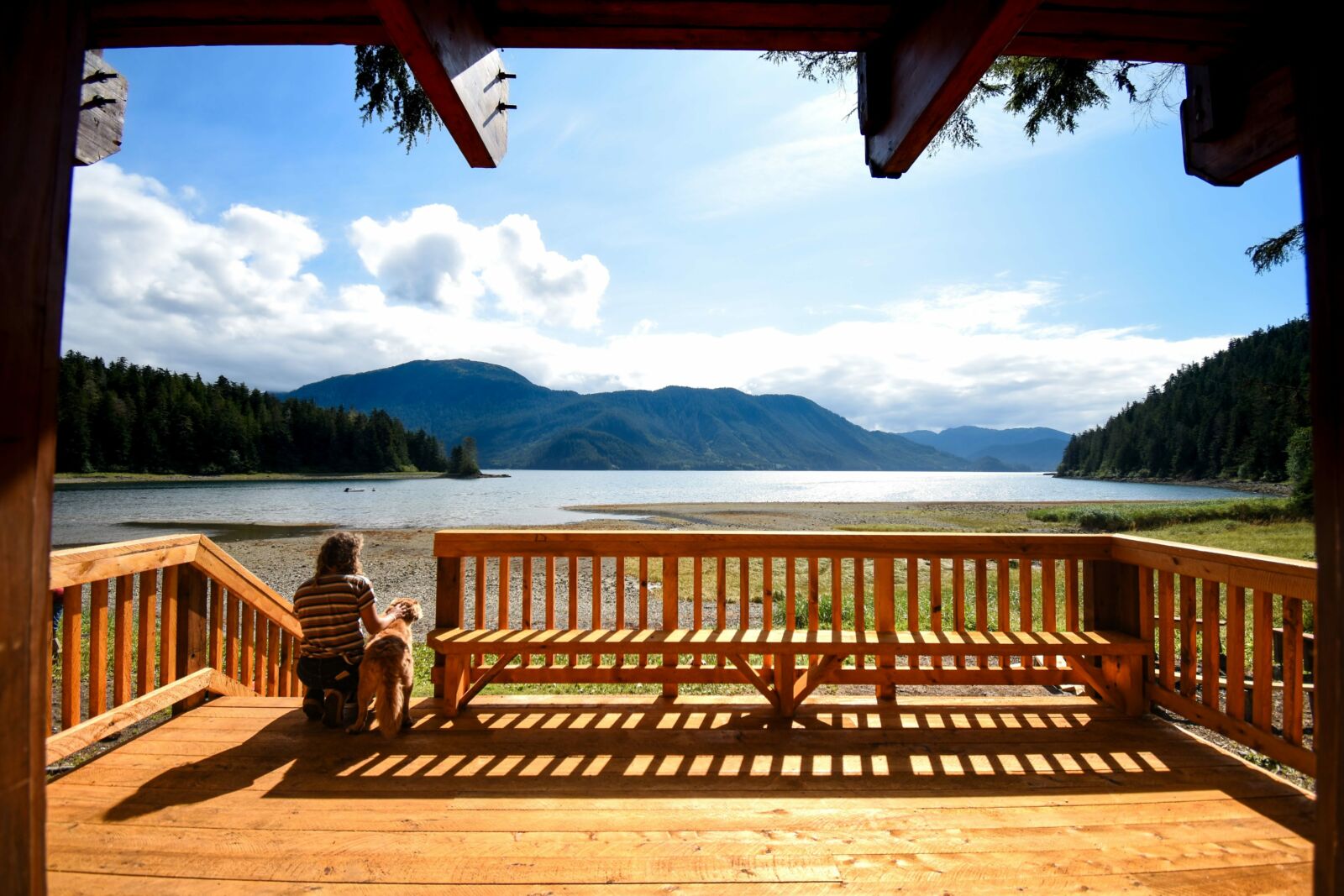
Grace Harang
The newly renovated deck of Allan Point Cabin is made of locally sourced yellow cedar.
Summer in Southeast Alaska means bears, salmon, berries, and tourists. It also means enough sunshine for a flurry of maintenance work on the Tongass National Forest. Last summer, that flurry resulted in a new yellow cedar deck for Allan Point Cabin.
The Sitka Conservation Society (SCS) coordinated with the Forest Service to do the renovation.The project was made possible by the National Forest Foundation (NFF) through a grant from Rasmuson Foundation, matched by the Alaska Forest Fund, a partnership between the Forest Service Alaska Region and the NFF.
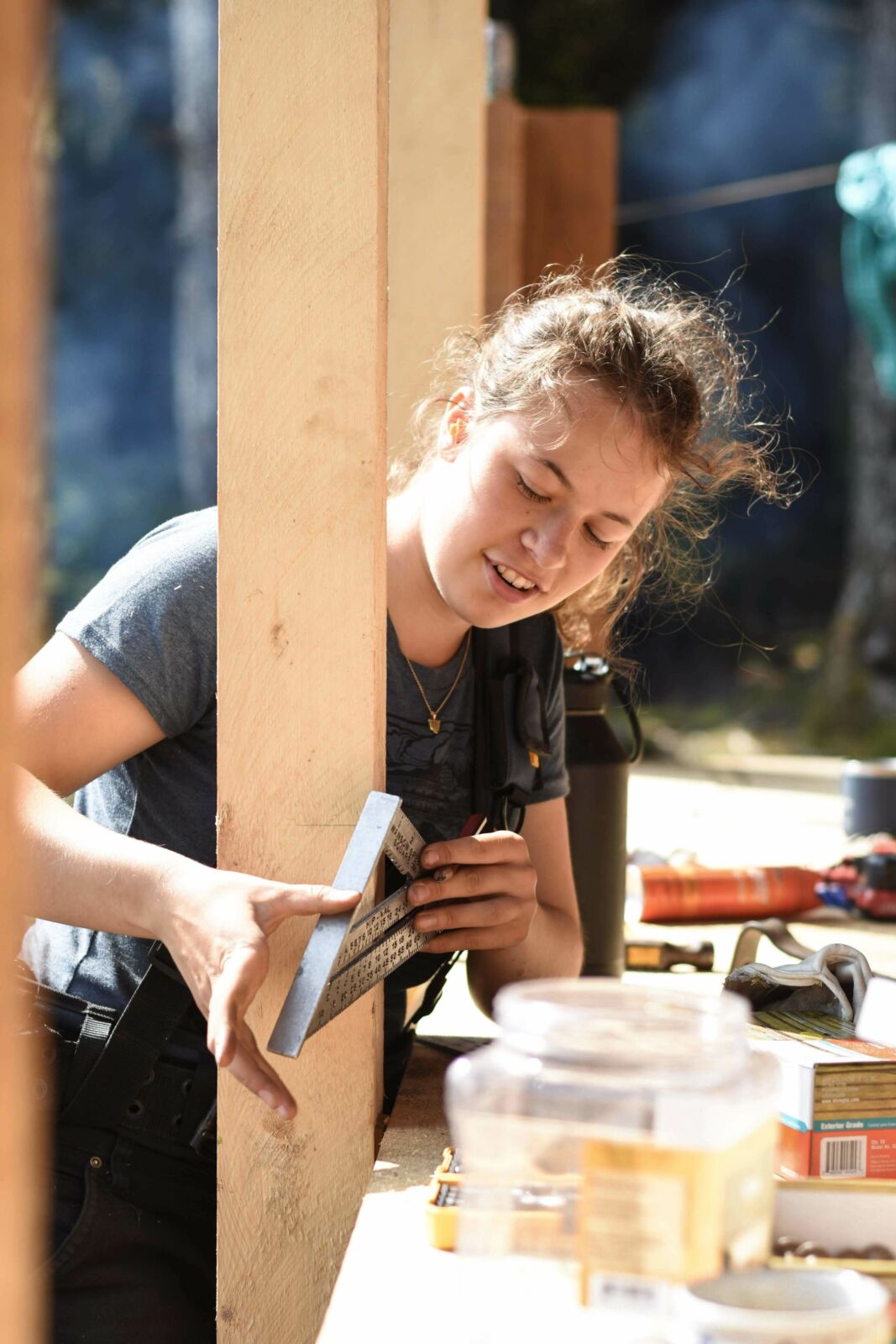
Grace Harang
Ariel Miller of T.M construction measures a railing.
“The Sitka cabin projects were basically the kickoff for a larger regional effort for cabin restoration,” said Nikki Olsen, Partnership and Volunteer Coordinator for the Tongass.
Forest Service cabins in Southeast Alaska are used year-round, with the Tongass as a world-class destination for outdoor recreation. The cabins are valuable to visitors as well as the communities they are close to.
“We're always looking at ways of finding opportunities for people to come here, not only during the peak season,” said Rachel Roy, executive director of the Sitka Chamber of Commerce. “You can have just this amazing retreat in December in a Forest Service cabin, so we're really lucky to have those.”
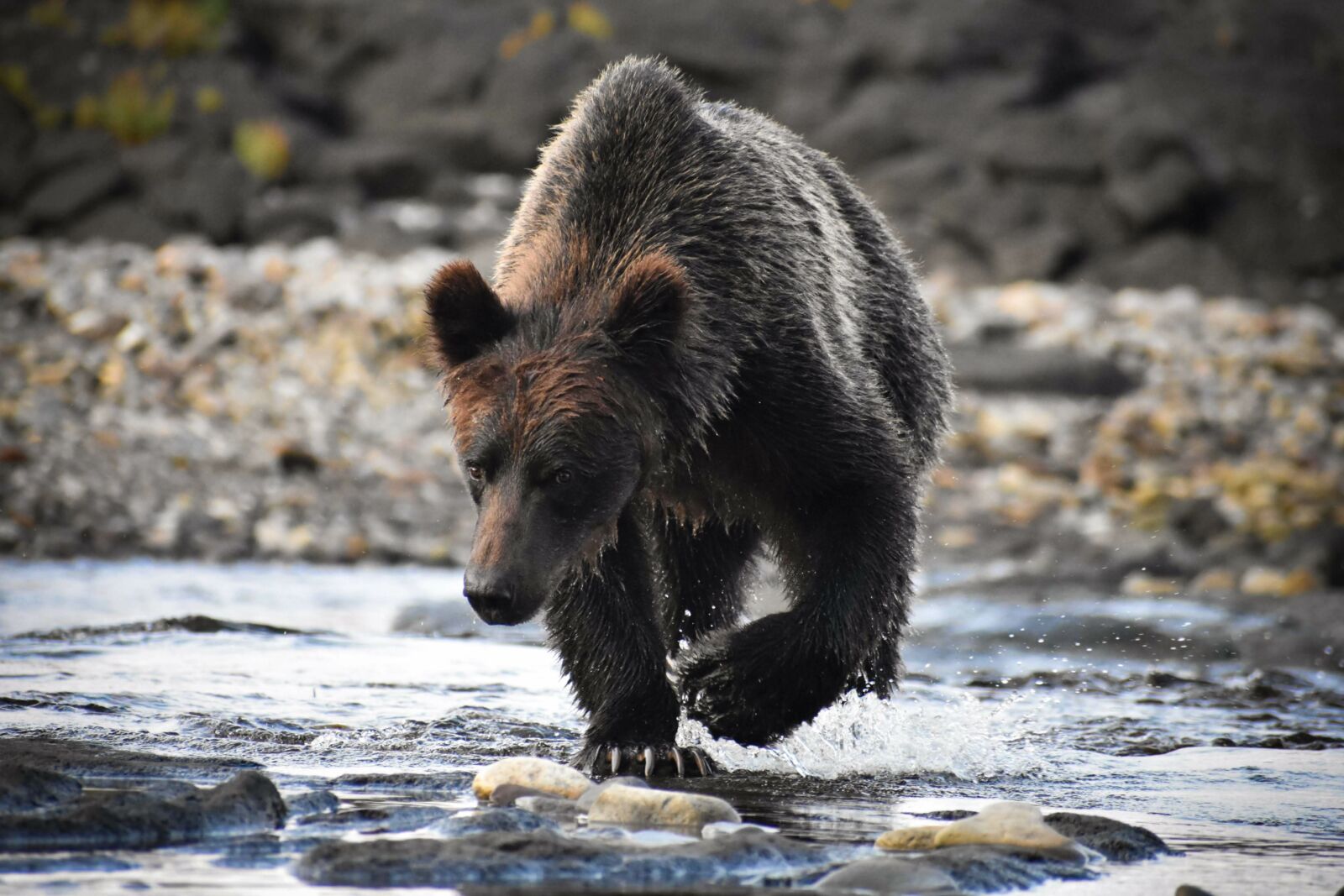
Grace Harang
A brown bear fishes for salmon near a cabin on the Tongass.
On the Sitka Ranger District, Allan Point is one of the most popular cabins, averaging 190 paid nights per year. Its deck offers a beautiful vista of Nakwasina Sound and the surrounding mountains. It has hosted many late summer dinners and early morning cups of coffee.
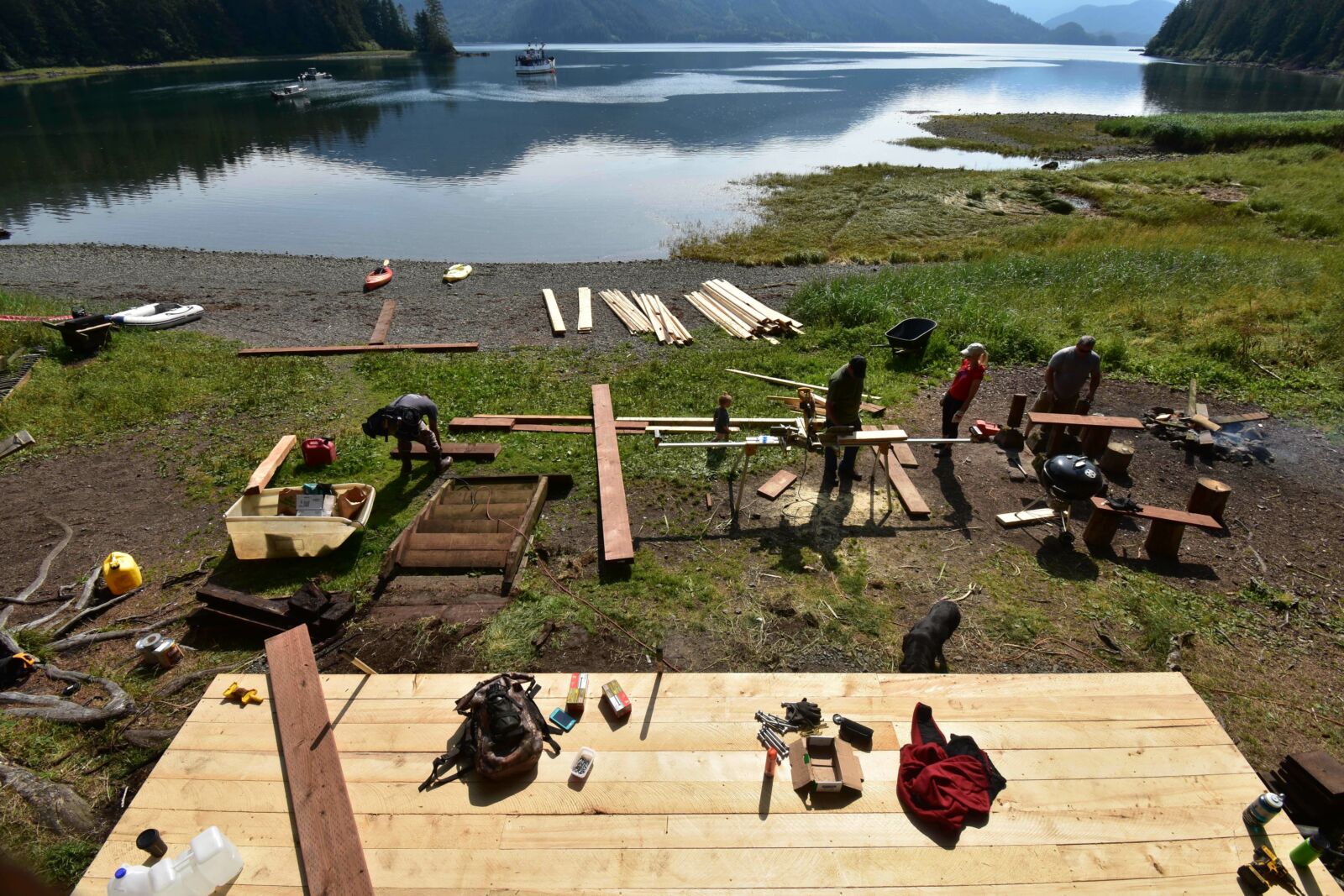
Grace Harang
Allan Point sits in an inlet of Nakwasina Sound.
“The deck is where everything comes together,” said Roy. “It’s such an important part of that building.”
However, the deck badly needed replacement. “It’s really exciting to see that that investment has happened,” Roy said. “The quality of the space that you get to be in when you're there, it's a reflection on our community.”
Most of the Tongass cabins, including Allan Point, can only be accessed by boat or plane. Between labor, time, and travel, it’s costly to do any maintenance.
Partnerships with the National Forest Foundation make these big projects more feasible, and involving the local community can make them a reality.
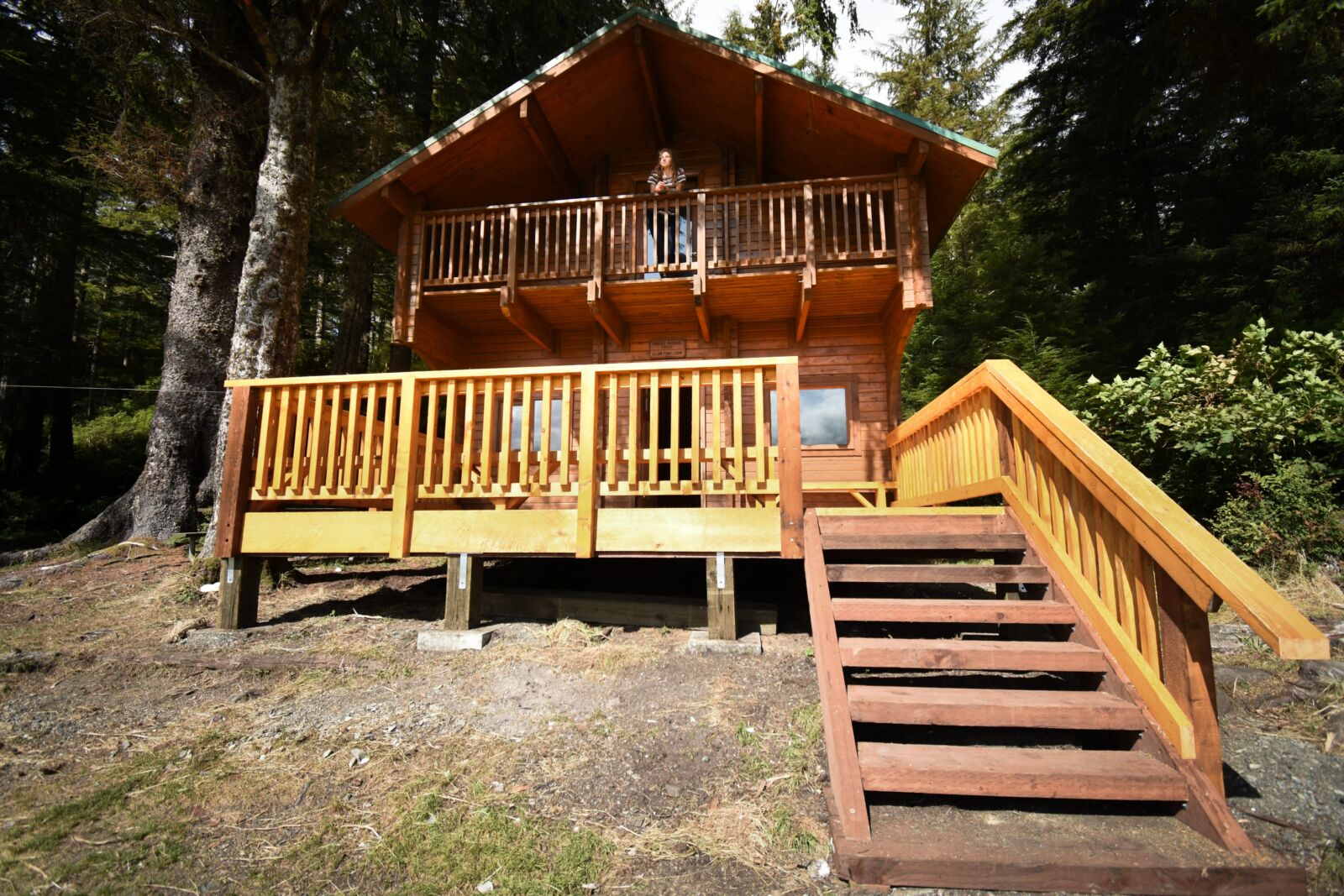
Photo by Grace Harang
The finished Allan Point Cabin.
“These are public lands, and management of public lands takes all of us being involved,” said Andrew Thoms, executive director of SCS. “It’s not just something that the Forest Service does; it’s something that’s part of our national heritage and our country’s core backbone.”
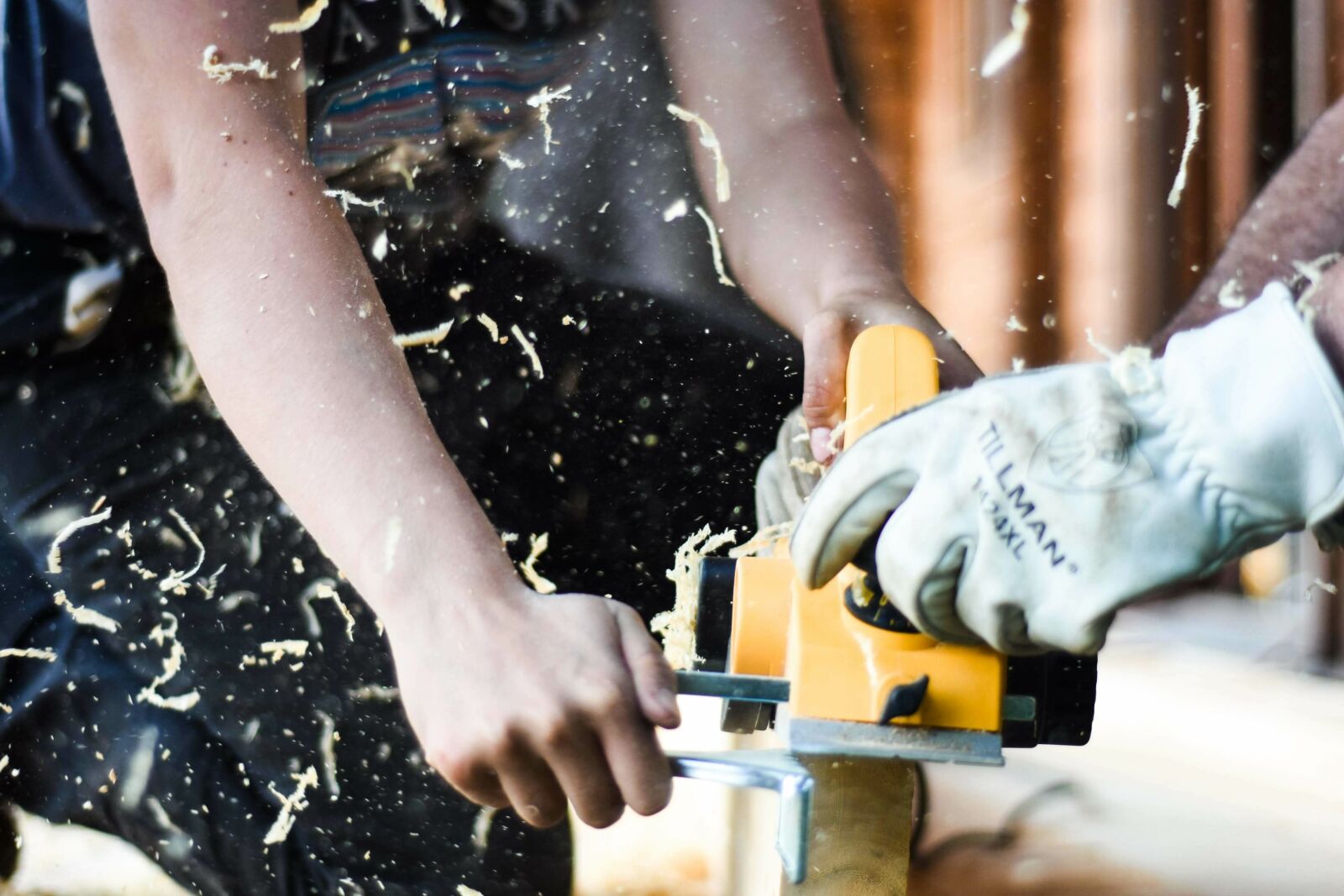
Grace Harang
Locally-sourced yellow cedar chips fly as Ariel and Craig trim a plank. Every piece has a character of its own, and some needed to be modified slightly to lock into the rest of the deck.
SCS brought in T.M Construction, a local, family-run sawmill and construction operation, to supply the lumber. Ariel Miller of T.M designed the new deck alongside Forest Service personnel and helped coordinate the on-site construction. “There's definitely not one word you can use to describe how much you learn from something like this,” she said.
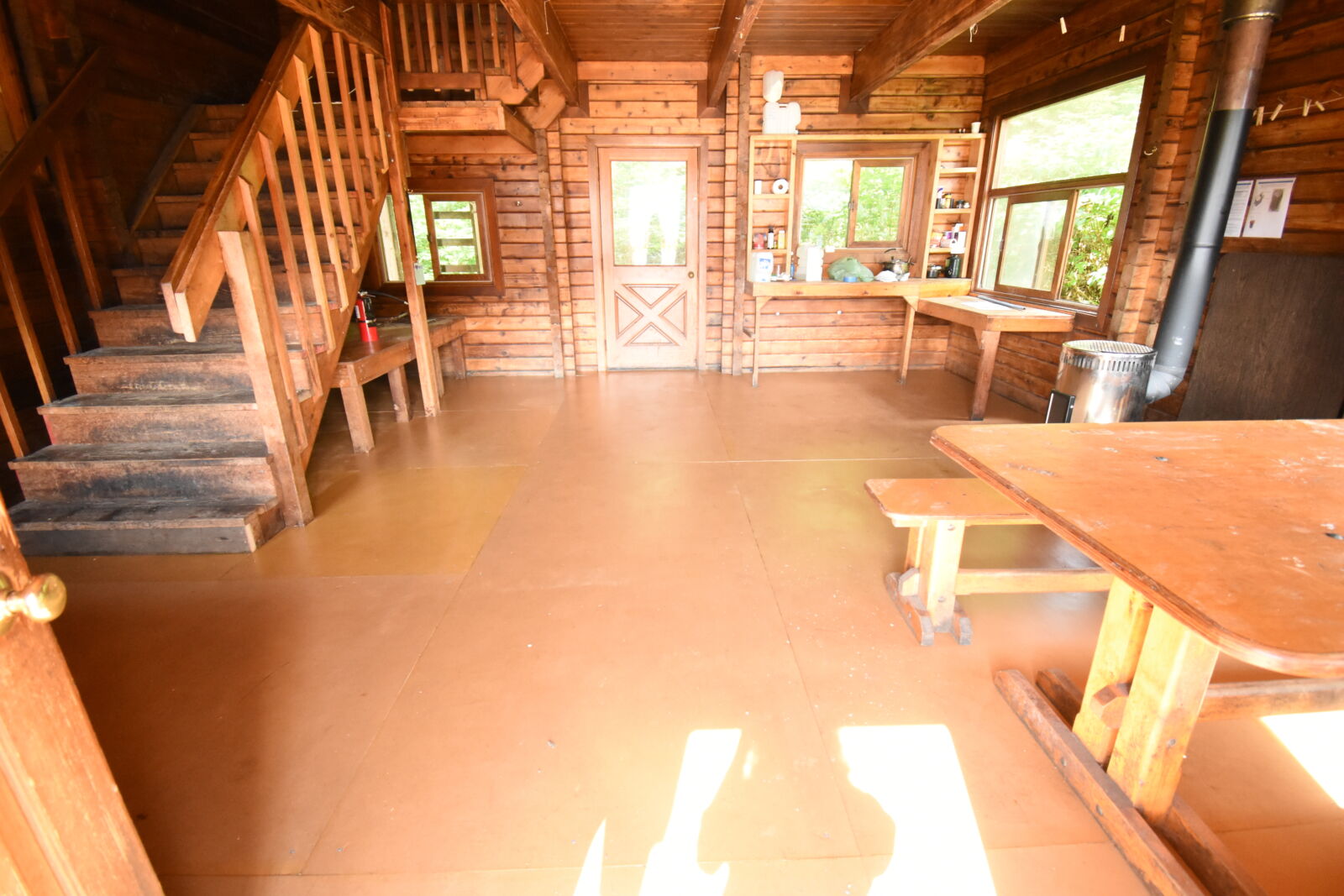
Grace Harang
The renovated interior of Allan Point Cabin features a yellow cedar floor.
The renovated Allan Point Cabin also features a new stove and new flooring made of yellow cedar. Yellow cedar, a native tree, is resilient to pests and rot. “It’s important that we have projects like this so we can experiment and innovate with local resources,” said Thoms.
“To be able to say: this is Alaskan yellow cedar, and it was made by Alaskans and for Alaskans, it's really cool,” Miller said.
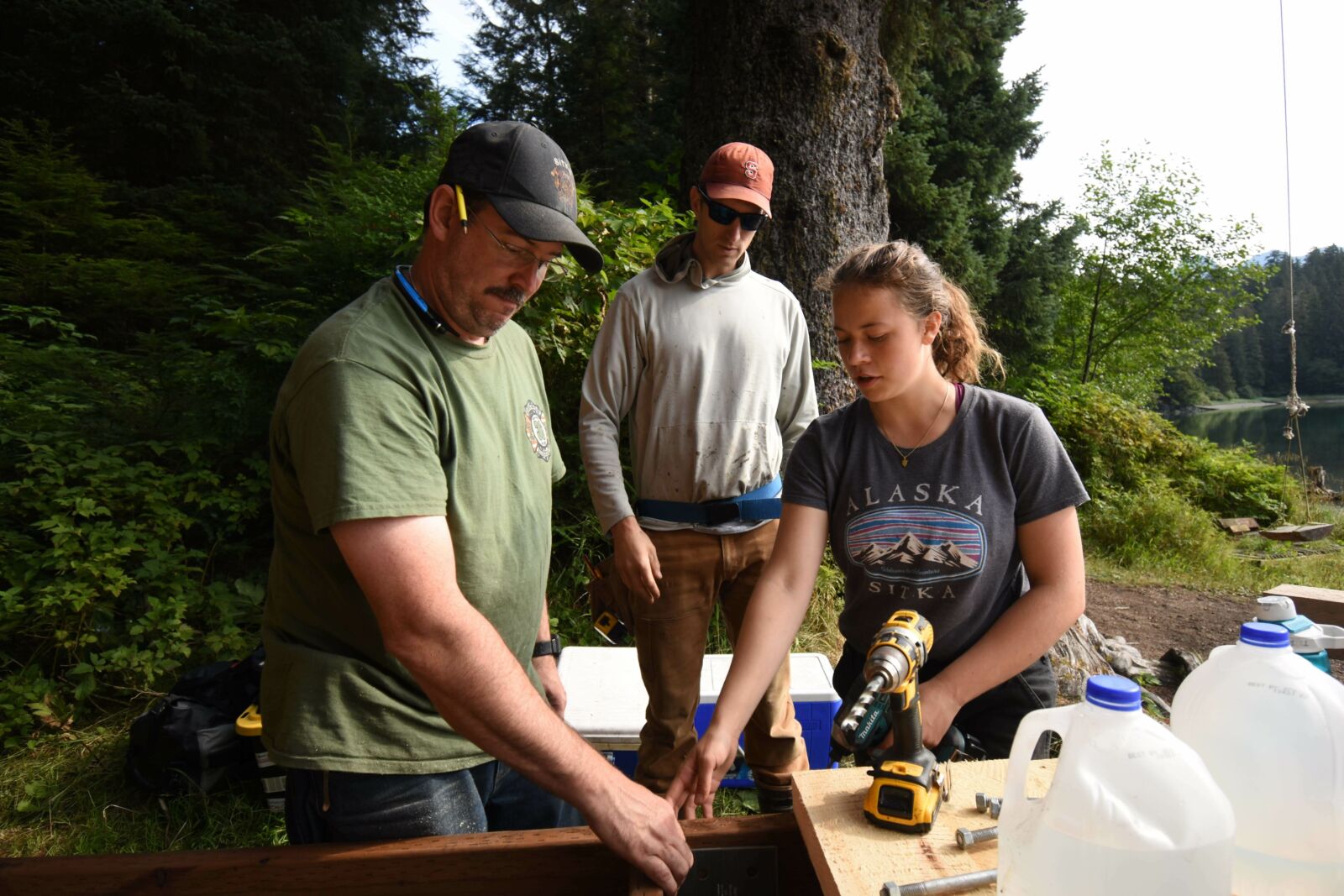
Grace Harang
Ariel Miller and Sitka Fire Department volunteers work on the deck.
In all, the renovation of Allan Point Cabin involved dozens of locals, from photography by high schooler Grace Harang to construction work by Sitka Fire Department volunteers. “We're making the Tongass more accessible for people. It's really gratifying,” Miller said.
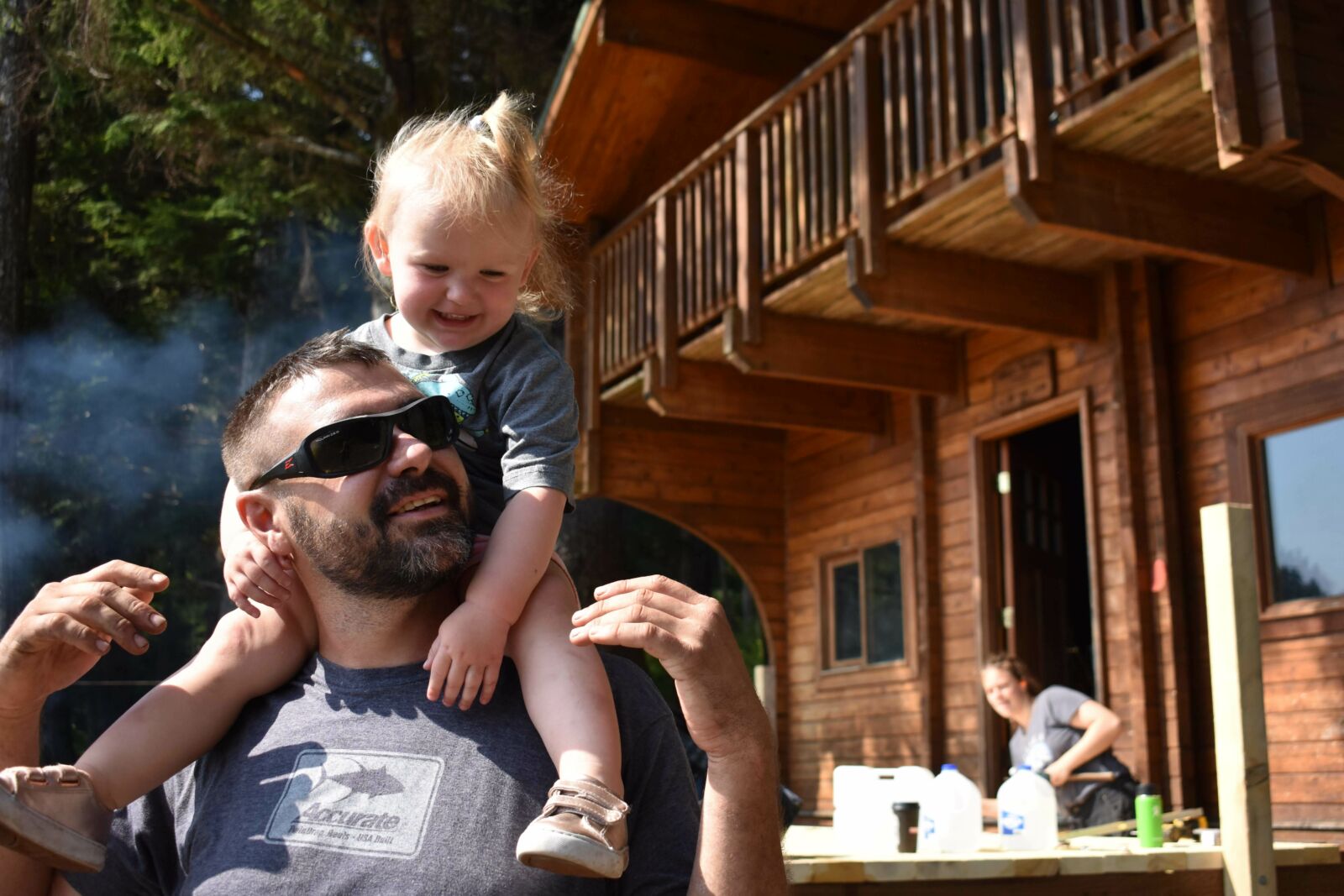
Grace Harang
Some family members came to support the construction crew.
“These projects are great examples of how it takes many partners and players to accomplish the work on the ground,” Olsen said.
Shaped with local wood and local hands, Allan Point Cabin will welcome many more families and friends into the vibrant rainforest of Southeast Alaska.
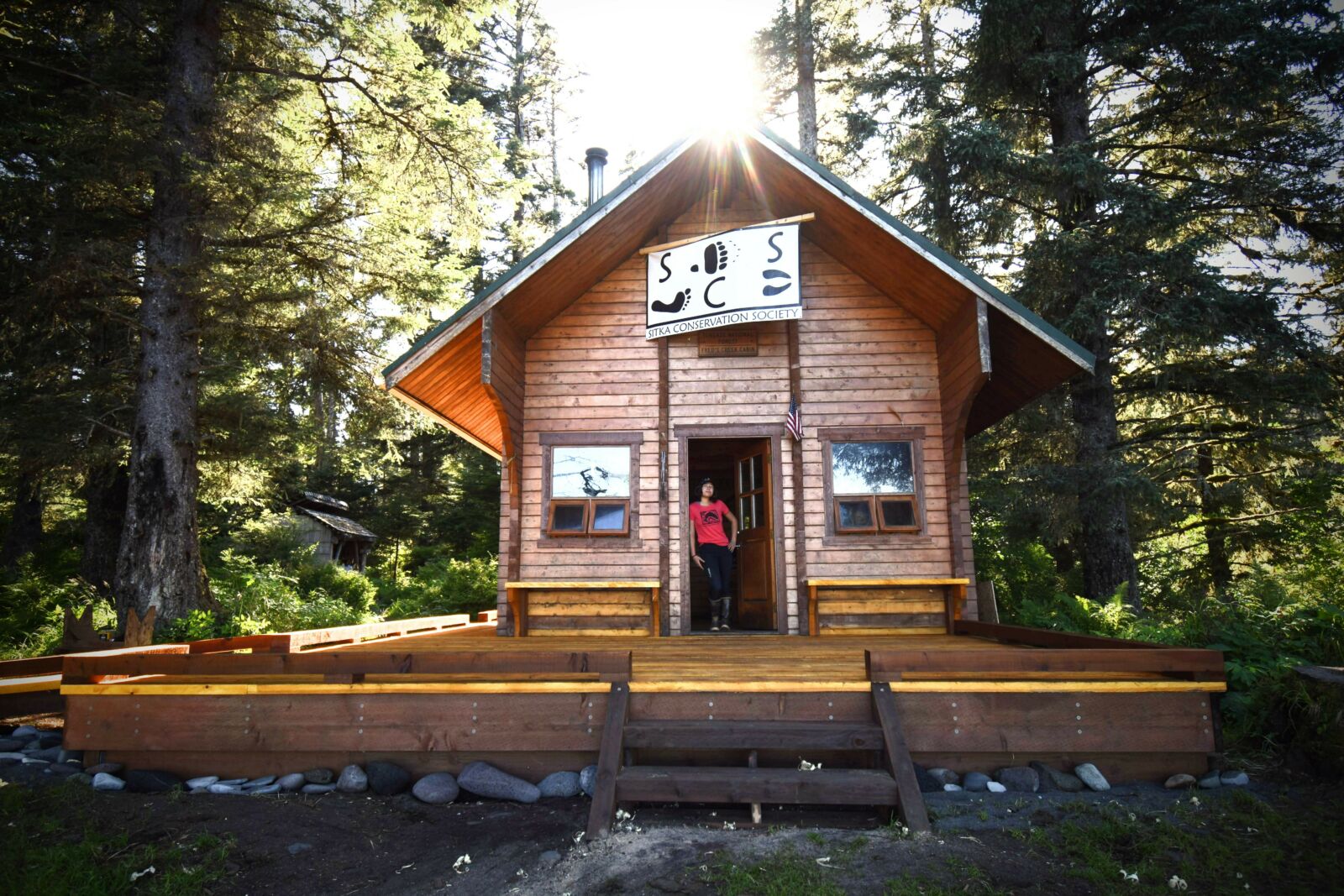
Grace Harang
Fred's Creek Cabin was also renovated through this project

